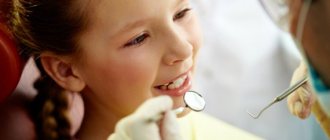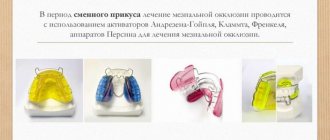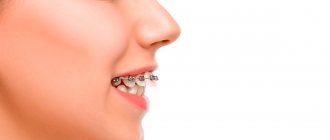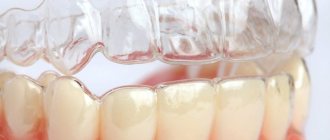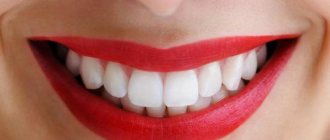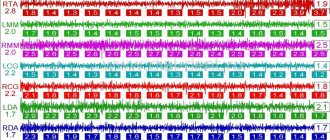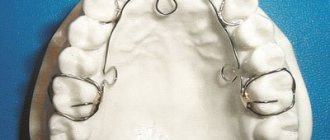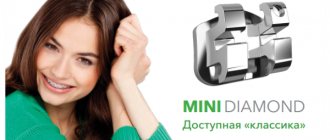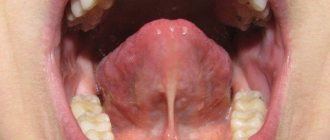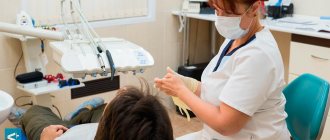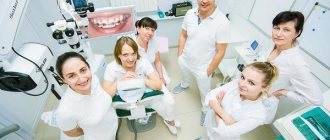We correctly pronounce various sounds thanks to good mobility of the organs of articulation. These include the lower jaw, lips, tongue, and soft palate. The accuracy and strength of movements of these organs develop in the child in the process of speech activity.
When speech articulation is impaired, speech therapists at the Yusupov Hospital use gymnastic exercises and innovative voice correction technologies. The goal of articulatory gymnastics is to develop full-fledged movements and certain positions of the organs of the articulatory apparatus, which are necessary for the correct pronunciation of sounds.
Articulation exercises for lips
Speech therapists conduct articulation gymnastics daily so that the skills developed are reinforced. Each exercise is performed 5-7 times. The articulatory pose should be held in one position for 10-15 seconds.
When selecting exercises for articulatory gymnastics, a certain sequence is followed, first simple exercises, and then complex ones. They are carried out emotionally, in a playful way. Articulation gymnasts are performed while sitting, since in this position the child’s body is not tense, the back is straight, and the arms and legs are in a calm position.
The patient must clearly see the speech therapist’s face, as well as his own face, in order to independently control the correctness of the exercises. A child and an adult should be in front of a wall mirror during articulation gymnastics. Children can use a small hand mirror. Then the speech therapist is located opposite the child, facing him.
Articulation gymnastics begins with exercises for the lips. The speech therapist talks about the upcoming exercise, using game techniques, and demonstrates its implementation. Then the child does the exercise, and the adult controls the execution.
The speech therapist monitors the quality of the movements performed by the little patient:
- accuracy;
- smoothness;
- pace;
- sustainability;
- transition from one movement to another.
He pays attention to the fact that the movements of each organ of articulation are performed symmetrically in relation to the right and left sides of the face. Otherwise, articulatory gymnastics does not achieve its goal. If the baby is unable to move, help him with a spatula.
The system of exercises for the development of articulatory motor skills includes both static exercises and exercises aimed at developing dynamic coordination of speech movements.
Children are asked to do the following lip exercises:
- smile - holding the lips in a smile, teeth are not visible;
- tube - stretching the lips forward with a long tube;
- rabbit - lips are closed, the upper lip is raised and exposes the upper incisors.
Next, perform exercises to develop lip mobility:
- tube smile - stretch the lips forward in a tube, then stretch them into a smile;
- the fish talk - clap their lips against each other (a dull sound is pronounced);
- snout - lips, elongated in a tube, move left and right and rotate in a circle.
The “dissatisfied horse” exercise is performed by speech therapists in the following way: the child easily and actively sends a stream of exhaled air to his lips until they begin to vibrate. The result is a sound similar to the snorting of a horse.
The “Fence” exercise develops the ability to hold your lips in a smile, exposing the lower and upper front teeth. The procedure for performing the exercise is as follows: smile, show your upper and lower teeth, hold your lips in this position for a count of five.
Indications for myogymnastics
The formation of a correct bite depends on the coordinated work of a group of muscles located around the dentition. Any disturbances in muscle function negatively affect the bite, the position of the jaw arch and teeth. With the help of myogymnastics, you can restore the functioning of the jaw muscles, straighten the bite, and correct the abnormal position of the teeth.
Gymnastics can be performed before orthodontic treatment, together with it, or after it to consolidate the result. The treatment method is determined by the orthodontist.
Myogymnastics can be prescribed as part of a complex treatment, or as an independent technique for correcting bite defects.
Myogymnastics has the following effect on the maxillofacial apparatus:
- activates bone tissue growth;
- helps strengthen muscles;
- forms a compensating mechanism;
- normalizes functionality;
- has a beneficial effect on tissue trophism.
As a result of gymnastic exercises, the jaw muscles are actively rebuilt, the jaw bones acquire an anatomically correct structure and shape.
When is it prescribed?
- malocclusion of varying severity;
- speech dysfunction;
- impaired tone of the facial muscles;
- incorrect placement of tooth crowns;
- preventive measures.
If a child has incorrect posture, then along with myogymnastics a set of physical exercises is prescribed to correct the position of the spinal column.
Myogymnastics is especially effective at the age of 4-7 years.
The earlier a child begins to perform gymnastic exercises, the greater the chance of correcting the pathology without medication and orthodontic intervention. After nine years, myogymnastics cannot be used as an independent technique for correcting malocclusions. However, it is recommended to perform it as an additional measure of influence on the dental system.
Tongue exercises
Children perform a set of static exercises for the tongue:
- spatula - the mouth is open, a wide, relaxed tongue lies on the lower lip;
- chicks - the mouth is wide open, the tongue lies quietly in the oral cavity;
- tube - the mouth is open, the lateral edges of the tongue are curved upward.
Then they move on to dynamic exercises for the tongue. During the “clock” exercise, the mouth is slightly open, the lips are stretched into a smile. With the tip of a narrow tongue, the child reaches alternately, at the teacher’s count, to the corners of his mouth. The “swing” exercise in speech therapy is performed as follows: the mouth is open, the child stretches his tense tongue to the nose and chin or to the upper and lower incisors. During the exercise called "football" the mouth is kept closed. With a tense tongue they rest on one or the other cheek.
With the help of the “sail” exercise, the upper rise of the tongue is prepared for the sounds [r], [l]. The child raises his wide tongue to the upper incisors and rests on the alveoli. The speech therapist makes sure that the tongue does not sag, but is tense and wide.
The purpose of the machine gun exercise is to strengthen the vibration of the tip of the tongue for sound. From the “sail” position, the child performs the “woodpecker” exercise and adds an air stream, like a push of air: “D-ddd” + push of a strong air stream. A vibration of the tongue occurs - “drr”. The exercise should be performed intensively 5 times.
Bite correction
The most effective way to correct a bite for adults is to wear braces and special gymnastics. Braces put pressure on the jaw and stretch the connective tissue of the gums, resulting in mechanical alignment of a crooked bite. These structures must be worn for a very long time and cannot be removed. The main disadvantage of braces is their negative impact on the enamel. In addition, braces do not look aesthetically pleasing and many people are embarrassed to wear them due to their unattractive appearance.
Other methods of correcting bites at home are mouthguards, veneers and trainers.
Mouth guards
These are special transparent dentures that allow you to safely correct the position of your teeth. They are very comfortable, do not cause discomfort and are almost invisible to others. In addition, aligners do not harm tooth enamel and are easily removed.
Mouthguards are often used not only to restore a normal bite, but also to whiten teeth. The only significant drawback of these structures is their high price, so people with low incomes are better off considering other options for correcting their bite.
Veneers
This method involves gluing special porcelain plates to the teeth. These plates are invisible from the outside because they are transparent. Veneers can correct the shape and position of teeth, as well as get rid of gaps between teeth.
Veneers can be full or partial. Full ones are worn entirely over crooked teeth, while partial ones hide only the visible parts of uneven teeth. These designs are resistant to external factors, last a very long time and do not cause discomfort while wearing.
Trainers
These designs are used only in childhood. They are made of silicone material, they are very comfortable and help to successfully combat malocclusion.
Trainers do not have to be worn all the time. You can wear them for just a couple of hours a day, as well as at night. Another important advantage of these structures is that they not only restore normal closure of the teeth, but also help the child keep the tongue in the mouth in the correct position, i.e. eliminate the very root cause of malocclusion.
Exercises to develop mobility of the lower jaw
In speech therapy, to develop speech articulation, exercises are used that promote the development of the lower jaw. These include the “Cowardly Little Chick” exercise:
- open and close your mouth wide so that the corners of your lips extend;
- lower your jaw approximately the width of two fingers;
- The “chick” tongue sits in the nest and does not protrude.
The exercise should be performed rhythmically. Then they simulate chewing with the mouth closed and open.
To perform the “angry lion” exercise, you need to lower your jaw down, extend your tongue as far as possible towards your chin and mentally pronounce the sounds “a” or “e” on a firm attack. It is more difficult to perform the exercise with whispered pronunciation of these sounds.
The child is asked to pronounce proverbs, sayings, tongue twisters, which are full of vowel sounds that require a wide opening of the mouth:
- small but daring;
- I found a scythe on a stone;
- like the fisherman, like the fish;
- the snake has a bite, the hedgehog has a hedgehog;
- a rolling stone gathers no moss.
During the exercises, the speech therapist ensures that the lower jaw drops freely downwards, and vowel sounds are first pronounced a little emphatically.
Reasons for appearance
Malocclusion develops in early childhood. Often this pathology is hereditary. If the parents suffered from this problem, the child may also develop it. In addition to genetic predisposition, there are other causes of malocclusion:
- Artificial feeding. A newborn baby needs to develop his jaw muscles. When he suckles at his mother's breast, it provides excellent jaw training. If you feed him from a bottle, the jaw muscles will not receive the necessary load, which will provoke the development of pathologies.
- Poor nutrition of a pregnant woman, stress. The lack of essential vitamins and microelements in a pregnant woman’s diet, as well as constant worry and stress, can cause a number of complications in the development of the baby.
- Bad habits of a child. A child's predisposition to thumb sucking, as well as prolonged use of a pacifier, can all contribute to changes in the normal bite.
- Jaw injuries. Facial injuries that result in the absence of some teeth can cause problems with jaw closure. That is why, if you receive a facial injury, you must immediately consult a doctor.
- Breathing through the mouth. Such an innocent problem as nasal congestion can cause serious disturbances in the formation of the jaws. A person constantly breathes through his mouth, and a number of his muscles atrophy over time, which causes a narrowing of the upper jaw.
- Parafunction of the tongue. This disease is characterized by speech impairment. Sometimes a child cannot pronounce certain sounds, as a result of which the articulation of his tongue is impaired - he does not squeeze his teeth enough, which leads to changes in the bite.
The key to successful bite correction is timely fight against it. It is best to deal with this problem from childhood, since the body is in the process of development, and restoration of the normal position of the jaws occurs much faster.
Training the muscles of the pharynx and soft palate
Speech articulation is improved by exercises that strengthen the muscles of the soft palate and pharynx:
- yawning with open and closed mouth;
- yawning with a wide opening of the mouth, noisy intake of air;
- voluntary coughing;
- imitating gargling with your head thrown back.
The child can be asked to gargle with a heavy liquid (kefir, jelly, juice with pulp), swallow water in small portions (20 - 30 sips), and puff out his cheeks with his nose pinched. You can imitate whistling, moaning, mooing.
Special devices
The following aids are also used in orthodontics:
- Vestibular plates - they are worn during sleep in order to normalize breathing and correct the position of the tongue and lower jaw. You need to insert it with your thumb, while simultaneously pulling out the special ring.
- Metal disc - aimed at weaning a child from bad habits such as thumb sucking, as well as correcting mouth breathing and distal occlusion. You need to close the disc with your lips, and at the same time move your lower jaw slightly forward. It is necessary to ensure that its position is strictly horizontal.
Speech therapy exercises for distinguishing sounds by ear
The purpose of the games and exercises below is to develop auditory attention and phonemic awareness. They help teach children to hear sounds in words, to differentiate certain pairs of sounds by ear and in pronunciation (s - z, s - c, c - ch, sh - zh, ch - shch, s - shch, z - zh, l - r ), correctly highlight the necessary words in phrases.
Games for children from two to four years old are based on onomatopoeia:
- how does a child cry? – AAA;
- How does the water flow? - SSS";
- how does a wolf howl? - UUH.
Another game for the little ones is “Song”. The speech therapist shows cards symbolizing vowel sounds - A, U, O, I in different orders, and the children sing a song.
The game of identifying the sound against the background of the word “Catch the sound” is carried out as a physical education minute. Children should jump up and clap their hands if a given sound is heard in the named word (for example [k]).
The goal of the game "Hunters" is to develop phonemic awareness. The speech therapist invites children to learn to catch sounds. He asks the children to pretend that they are sleeping (so as not to be startled by the sound): put their heads in their hands, close their eyes. Having heard the desired sound among other sounds, you need to “wake up” (sit up straight).
To set sounds in speech therapy, the “Window” exercise is used. The child is taught to keep his mouth wide open. The exercise activates the orbicularis oris muscle and the mobility of the upper lip. The child learns to lower the root of the tongue and move the tongue close to the teeth. The baby is asked to smile, open his mouth wide and move his relaxed tongue close to his teeth. You should hold the position for a count of five. During the exercise, the speech therapist makes sure that the baby’s lips are stretched, the teeth are visible, the root of the tongue is lowered, and the tongue is located symmetrically in the oral cavity.
Operating principle
To achieve the expected result, you need to adhere to the following basic principles of treatment:
- sequence - first, simple exercises are studied and actively used, and only after mastering them can one begin more complex complexes;
- systematic - you need to practice daily, regularly, on an ongoing basis, without taking long breaks;
- consciousness - myogymnastics helps best when the child understands what is required of him and performs the correct movements with great desire;
- activity - muscles must perform maximum amplitude;
- individual approach - only taking into account the jaw structure of a particular child can we talk about any exercises, since they are not universal and different combinations are used in each clinical case;
- age range - the best period for effective results is from 4 to 7 years;
- integrated approach – the greatest achievements can be boasted by those patients who used myogymnastics in conjunction with other methods of treating dentoalveolar anomalies, for example, the Rokabado complex is often supplemented with autogenic training and acupressure.
Breathing exercises in speech therapy
Training the articulatory organs and the development of speech breathing is one of the main points in the structure of speech correction classes with children who have defects in the pronunciation of sounds. Articulation and breathing exercises play a particularly important role in the correction of dysarthria. Speech therapists at the Yusupov Hospital consistently use various types of gymnastics. First, general motor exercises are performed, followed by breathing exercises, then vocal exercises, and only at the end articulation exercises.
Breathing exercises begin with general breathing exercises. Their goal is to increase breathing volume and normalize its rhythm. The patient is taught to breathe with his mouth closed. They train nasal exhalation by telling the baby: “Inhale deeply and exhale for a long time through the nose.” Then they practice mouth exhalation, while closing his nostrils. Exercises with resistance are used when the speech therapist places his hands on the chest, as if preventing inhalation for 1-2 seconds. They teach you to hold your breath, achieving a deep, quick inhalation and a slow, long exhalation.
Breathing exercises are performed using game techniques. “Bubbles” – use a straw and a glass of water. The speech therapist pays attention to the fact that the exhalation is long, that is, the bubbles should “come out” for a long time.
It is fashionable to use all kinds of whistles and pen caps for children's musical instruments.
“Focus” is an exercise with a piece of cotton wool that prepares you for pronouncing the sound [r]. The speech therapist places cotton wool on the tip of the nose. The patient is asked to stretch out his tongue, bend its tip up and blow on the cotton wool to blow it off the nose.
You can suggest blowing on the flame of a burning candle so as not to blow it out, but only slightly deflect the flame. You should blow carefully, slowly, for a long time. The same exercise is used when producing whistling and hissing sounds.
Useful tips
| Click to sign up for a FREE consultation |
To soothe pain and alleviate the general condition of TMJ, you can use these useful tips:
- cold or hot compresses applied to the affected area;
- massage of the sore area, which helps relieve some symptoms and relieve pain.
Exercises performed to treat TMJ are a good alternative to medications and surgery, which often have the most unpleasant side effects. But we must not forget that gymnastics methods can only be used as prescribed by a doctor, that is, in the absence of serious pathologies (they are characteristic of an advanced stage and surgery is necessary here).
Medical technologies in speech therapy
Biofeedback is a unique medical technology of the 21st century. It is based on the use of modern electronic equipment. The technique allows anyone to learn how to control their body and allows them to treat the following speech disorders:
- stuttering;
- speech anxiety;
- violation of the tempo of speech;
- violation of sound pronunciation (at the stage of automation of sounds and their introduction into speech);
- reading disorders.
Speech therapists use the following types of art therapy in the treatment of speech disorders:
- music therapy;
- kinesiotherapy;
- fairytale therapy;
- mnemonics;
- creative play therapy (sand therapy).
Body-oriented medical technologies used in speech therapy include stretching, relaxation exercises, and breathing exercises. Rehabilitation specialists at the Yusupov Hospital perform massage of the muscles of the peripheral speech apparatus for speech disorders. It helps to normalize muscle tone and thereby prepare the muscles to perform complex movements that are necessary when articulating sounds.
Finger massage of the palmar surfaces with stone, metal or glass multi-colored balls, clothespin massage and others are included in the rehabilitation program for patients with speech disorders. If you have a speech disorder, call the Yusupov Hospital.
Correcting your bite while sitting on the couch at home
Many people are faced with such an unpleasant problem as malocclusion. Almost 85% of the country's population has this pathology. Until the recent past, it was possible to get rid of malocclusion exclusively with the help of braces, and a significant effect was achieved only when used in adolescence or childhood. But technology is developing rapidly and now there are many ways to correct bites even in adults.
Rules
When performing myogymnastics, doctors recommend following a number of rules and precautions. This will ensure safety and help achieve the maximum possible effect. Typically, at an appointment with an orthodontist, the patient receives the following recommendations:
- When performing physical therapy, it is necessary to carefully monitor muscle tension. It is important to choose the optimal load and prevent pain from occurring, since overtraining can harm and even worsen bite defects.
- The load should increase gradually. Don't try to do every exercise with maximum effort. The number of repetitions should increase from workout to workout. This will also avoid overexertion and make performing myogymnastics more comfortable.
- However, contractions should still be performed with some effort until a slight feeling of fatigue appears. The patient should also strive to constantly increase the amplitude.
- Before each approach, you need to take short breaks to allow tense muscles to relax and recover a little.
Rules for conducting myogymnastics
Sometimes, when jaw changes are quite pronounced, when performing gymnastics, special devices and devices are used, which are given by the doctor. They help achieve results faster.
Contraindications
Important! In some cases, myogymnastics is not recommended or even contraindicated:
- Bite disorders in an advanced stage (3 and above).
- Atrophy of the facial or jaw muscles caused by any pathologies.
- Hypotrophy of the jaw as a result of certain somatic pathologies (for example, rickets caused by vitamin D deficiency).
- Immobility of the jaw joints.
Contraindications to the use of myogymnastics

